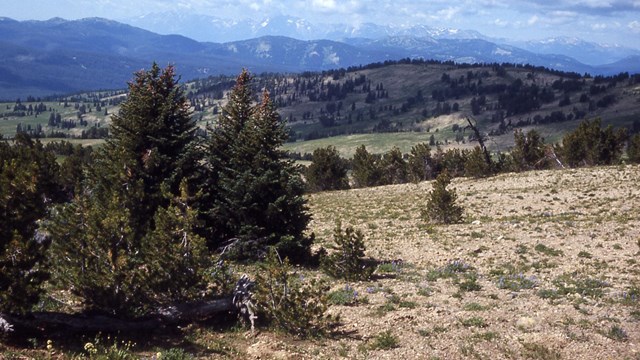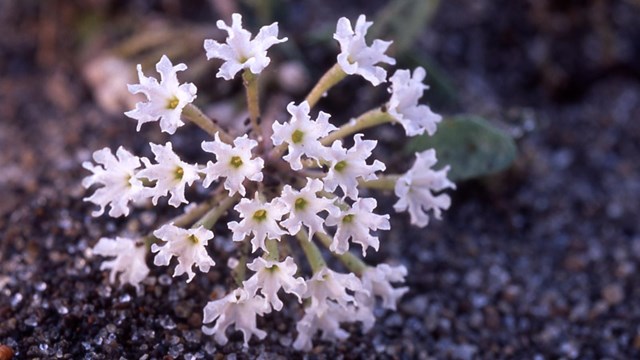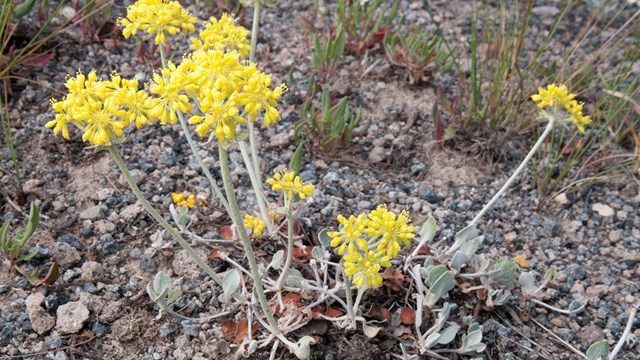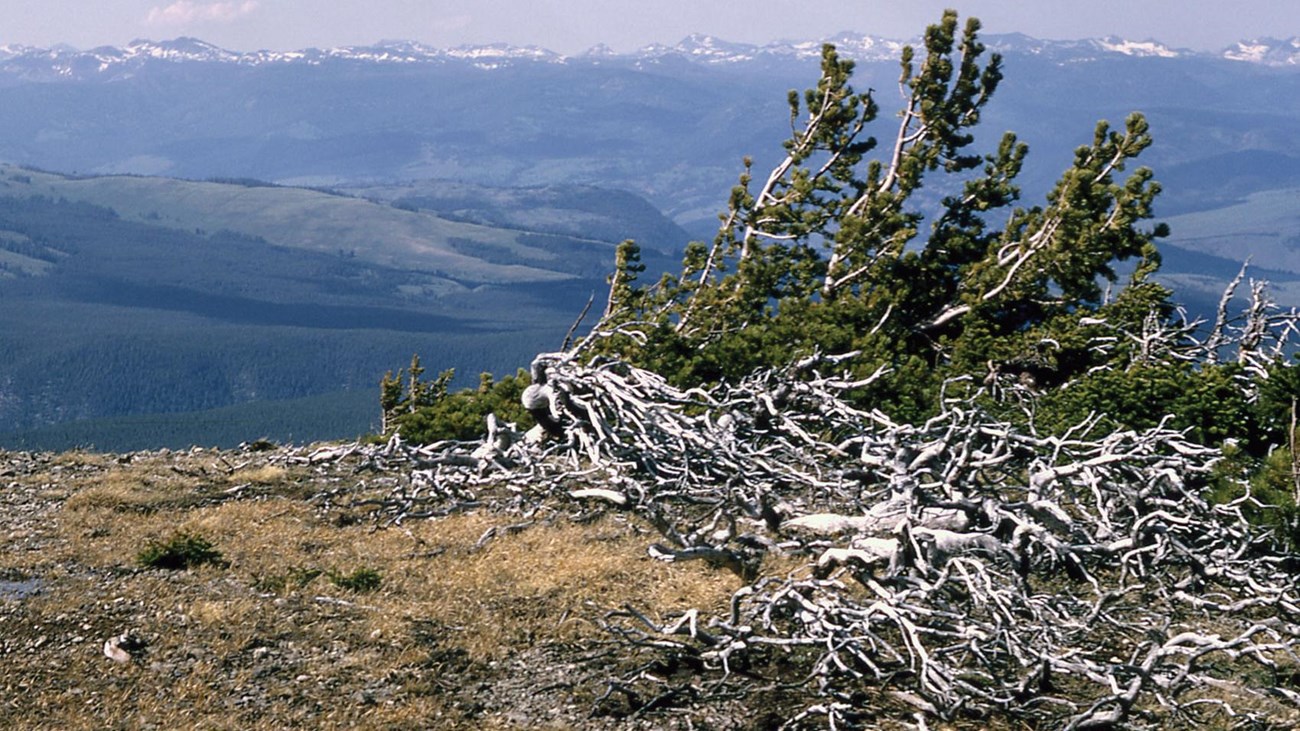
NPS Yellowstone’s geothermally influenced plant communities contain species that must be able to tolerate a wide range of conditions. Although most of these species are widespread in range and occur at diverse elevations, not all of them are common. A unique grass of the geyser basins is Ross’s bentgrass (Agrostis rossiae). This species is highly restricted in range. It grows in “vapor dominated” sites in the thermal areas, such as crack systems, the walls of thermal springs, or geothermally influenced depressions. Together, the widespread species and the local endemic form an interesting plant community in geothermal areas. DistributionRoss’s bentgrass grows only in the geyser basins in the Firehole River drainage and at Shoshone Geyser Basin. Even within the thermal areas of Yellowstone’s geyser basins, the right conditions to support Ross’s bentgrass are rare and highly scattered. Thermal habitats are distinguished primarily by their elevated soil temperatures, and heat stress is the primary factor controlling the distribution of plants within them. This species seems to require locations providing the right combination of moisture and warmth that create a natural greenhouse. As a result, this grass is one of the first plants to green up in warm pockets of geyserite—sometimes as early as January. In the right conditions, Ross’s bentgrass can grow profusely, sometimes with several hundred plants in a very small area. Although Ross’s bentgrass is considered a poor disperser of seed, this trait may be adapted to thermal habitats that tend to be small and scattered. A seed bank in the thermal area may be more advantageous to a thermal species than dispersing seed into habitat where the plant is unlikely to survive. Most of the known sites of Ross’s bentgrass, fewer than 12 acres of occupied habitat in total, have been mapped using the Global Positioning System (GPS). Life HistoryBecause the seeds of Ross’s bentgrass germinate from December to January, the plants are a conspicuous green presence in the thermal areas by late winter. Flowers are produced in May and early June when the plants reach their maximum size of 1.5–7.8 inches (4–20 cm), after which they dry out and die as the soil temperature rises. Flowers may be present in February and March, but the plants typically do not produce viable seed that early. Full bloom occurs in late May and early June. As soon as temperatures rise in the early summer, the plants dry out due to the sun’s heat from above and the thermal heat from below. Ross’s bentgrass is already dead and hard to find by July. Life in Thermal AreasAlthough the temperature an inch beneath Ross’s bentgrass can be 100°F, it does not appear to be especially heat tolerant. It survives only in thermal areas because their lethal summer temperatures impose a short growing season advantageous to annual plants with precocious flowering and prevent competition from slower growing perennials. Any plant growing in thermal areas must be able to deal with constant change. A successful plant in the geyser basins must be able to shift location relatively easily, because one major thermal change, or several smaller changes, could eradicate the entire population. Apparently, Ross’s bentgrass deals with this problem efficiently. Its seed-dispersal mechanism probably includes traveling on the muddy hooves of bison and elk who inhabit thermal areas during the winter. Nonnative species, such as cheat grass, pose the only known threat; as they spread in thermal areas, they eventually may out-compete Ross’s bentgrass. ResearchRecent genetic research indicates that another Agrostis found in thermal areas, which was previously considered the same species as the perennial A. scabra (ticklegrss), is actually an annual more closely related to A. rossiae as well as to A. scabra var. geminata in Lassen Volcanic National Park and A. pauzhetica from the Kamchatka Peninsula of Russia. The thermal Agrostis complex needs to be more closely investigated to determine the taxonomy and correct scientific name for this other annual bentgrass in Yellowstone’s thermal areas. Sometimes both of the thermal Agrostis occur in the same area, but generally they do not grow directly adjacent to each other. While Ross’s bentgrass occurs only along the Firehole River drainage and Shoshone Geyser Basin, the other Agrostis is commonly encountered at thermal areas throughout the park. Both Agrostis are typically surrounded on cooler ground by non-thermal ticklegrass, which is common in the park interior and reproductively isolated from the thermal plants by its later flowering time. The primary threat to Ross’s bentgrass is fast-growing, invasive annual species such as cheat grass, bluegrass, and chickweeds. These species are restricting the presence of A. rossiae at several locations in the Upper Geyser Basin. Source: NPS DataStore Collection 7863. To search for additional information, visit the NPS DataStore. 
Vegetation & Resources Management Branch
Park employees inventory, monitor, manage, and research the vast array of plant communities in the park. 
Yellowstone Sand Verbena
Yellowstone sand verbena occurs along the shore of Yellowstone Lake. 
Yellowstone Sulphur Flower
Yellowstone sulphur flower is only found in the Firehole River drainage. 
Plants
More than 1,300 plant taxa occur in Yellowstone National Park. |
Last updated: April 18, 2025
